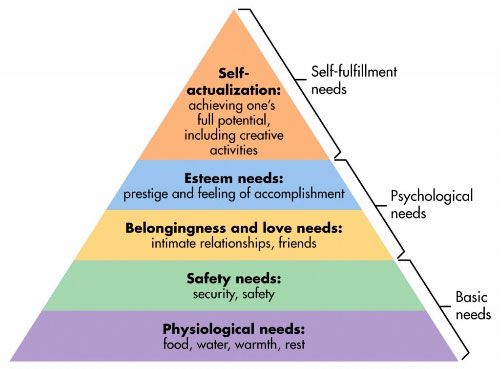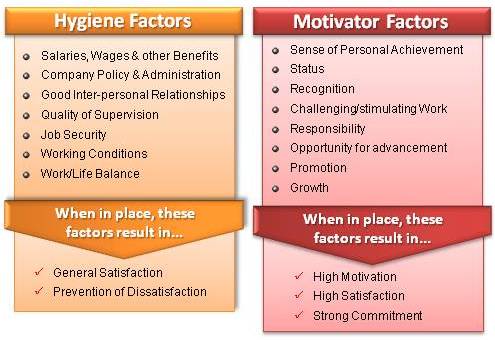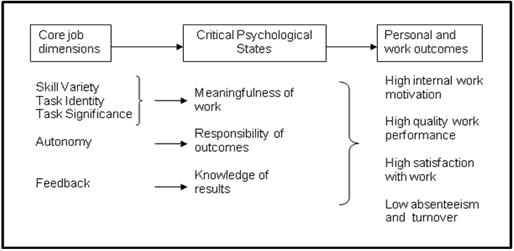1. Introduction
1.1 Brief introduction about the organisation
ABC Bank PLC is listed as one of the fast growing banking company in Sri Lanka and the organisation has a high level of market capitalisation. The bank is offering various banking services to both public and corporate parties to suit their financial needs. The vision of the organisation to become the innovator of the banking solutions. The vision of the bank is mainly focusing on the small and medium enterprises and the bank wants to be their bank of choice. The vision of the bank provides proper guidance to the organisation how to maintain their consumer base effectively and efficiently. Because of the high quality consumer care, the bank was able to achieve better market share competitively in the market while providing better benefits to its shareholders as well.
For the purpose of providing outstanding services to the consumers and achieve the organisational vision, ABC Bank PLC should have well performing staff. When it comes to the consumer care, the employees would have the most important role to play. Because they are the party who has higher interactions with the consumers. The organisation has almost 2500 employees currently and nearly 500 of those employees are in the Banking Assistant grade. The Banking Assistants have a major role to play when it comes to the day to day banking functions and consumer handling. But most of the banking assistants are not highly experienced. Most of them have less than five years of banking experience. Because of the fewer experience levels, the employees would have to improve their knowledge and skill levels gradually to meet the expectations of the bank.
1.2 The research problem
The proposed research is following the topic of “A critical analysis of high staff turnover at ABC Bank PLC”. ABC Bank PLC is experiencing a high level of employee turnover during the time. The turnover ratios of the bank are increasing, in 2013 it was 7%, 2014 it was 10% and in 2015 it was increased to 14%. Mainly the high level of staff turnover percentages can be seen in the role of Banking Assistants.
It is widely known fact, that the high level of staff turnover would not benefit the organisations. Because of that, the bank is facing the same level of disadvantage that would occur due to the high level of and increasing staff turnover. The organisation has taken various employee retention strategies by providing them with the both financial and non financial benefits. But still the ratios of employee turnover is growing and the organisation would need to find solutions to the problem before it tarnishes the good name of the bank in the market. During the research, the main objective would assess the research data and make necessary recommendations to the organisation to address the employee retention challenges.
1.3 Rationale of the research
Increasing employee turnover ratios would not benefit the organisation. Employee retention is challenging and it is harder to find an organisation which has zero levels of employee exits. But the organisation should be able to maintain the employee turnover ratios at the minimum level and most importantly these levels should not be increasing. Increasing levels are indicating that the employees are finding challenges in the organisation and they have fed up with dealing those challenges. The management of the organisation would have the highest level of responsibility to provide solutions for those challenges and make better working conditions in the organisation to the employees.
Employee leavings of the organisation would make a higher impact to the organisation. It would require to hire new employees, train them and place them effectively to conduct the organisational functions. To do those tasks effectively, it would need a great deal of time and investment. Also untrained and unskilled employees would need to be “spoon-fed” when conducting the organisational functions and that would make additional pressure to the management when managing the people in the organisation.
During the research, it would expect to assess the reasons for the high employee turnover of the organisation. This would reveal the unseen current problems and the organisation would be able to address those problems effectively to improve the resistant to the challenges of the employee retention of the organisation.
2. Literature survey
Humans are not like machines. Machines would do whatever the task that they designed for without asking questions and trouble. The only requirement is the proper maintenance of the machines to ensure the smooth functioning of the machines. Humans are not like that. Sometimes they work well and sometimes they would not give their best. Various justifiable and unjustifiable reasons would impact the humans’ behaviour and due that they would act differently even with the same level of environmental conditions. One would keep his performances stable even in a harsh environment, while another one would ask for more even enjoying the more benefits from the organisation. To identify the differences it is required to critically review the relevant literature of the proposed subject area.
2.1 Reasons for the leavings
Employees would have various reasons to leave the organisation. The management of the organisation should be able to understand the reasons for the employee leaving of the organisation. Those reasons should be assessed effectively to face the challenges of the employee retention much more effectively to achieve the organisational expectations.
2.1.1 Environmental conditions
Any organisation would have a culture. Sometimes the organisational culture would have differences when comparing to the country’s national culture. The people of the country is highly familiarised with the national culture and when a new employee facing a whole different culture in the organisation he would find various challenges during his day to day business processes. He would need to learn and conduct organisational activities while adjusting to the organisational culture as well and sometimes the employee would not be able to align with the organisational culture even though they are performing well in the organisation.
The management methods of the organisation should be highly effective. Sometimes the employees find the working conditions are harsh because of the policies and practices of the management. The management of the organisation should balance the employee motivation to achieve the organisational goals and it is essential to keep good relations with employees to achieve the better performances from them.
The employee should feel that their working conditions and the environment are sound and safe to work properly. They should feel comfortable in the organisational environment and they should be able to communicate effectively. The proper feedbacks would improve the organisational environment and the management should be able to remember the importance of maintaining the good organisational environment while achieving the organisational goals as well.
2.1.2 Personal expectations and Other reasons
Even though the environmental conditions of the organisation are better some employees would leave the organisation simply because they do not see the proper future of their careers in the organisation. Their expectations are high and they wanted to have elevated status and they would not see the ability to achieve that goal while working in the current organisation. Sometimes the employee would conduct the job to find his college expenses and they do whatever the thing to make money to have a good education. Eventually, that person would go for another position of another organisation that suits his educational achievements.
Most of the time the marital status would also impact on the employee retention. Single people find a higher level of flexibility of life and they would not possess a high level of risk and responsibility of life. Because of that, they would tend to leave the organisations because of small matters and attitudes incompatibility. The married people would not have such flexibility and they need to ear to keep their life stable and because of that, they would not take any rapid decision about their careers and jobs. They would think harder and they would not level the organisation so fast. Many personal expectations would encourage the employees to leave the organisation and the management should be able to understand the employee expectations and maintain that expectation accordingly to face the challenges of employee retention.
Some employees would leave the organisation because of irrational matters. Gossips and miscommunication would encourage those irrational beliefs and due to that, the employees would leave the organisation. Sometimes the employee would leave the organisation because the other employees are leaving. They would think that those employees are leaving because of the management problems and they would fear that those problems would also make an impact to them as well. Most of the time fear would be the reason for the irrational decision that the employee would make to leave the organisations.
2.2 Employee job satisfaction
The employees should be satisfied with their work in order to keep performing their jobs effectively. Satisfaction means that the employee should have the expectation that can be fulfilled by the organisation. The satisfied employee would have a high level of motivation to achieve the expected performance levels and vision of the organisation. By maintaining proper motivation in the organisation the management would be able to improve the employee job satisfaction.
2.2.1 Maslow’s Hierarchy of Needs
The Maslow’s Hierarchy of needs is a model that explains the expectations of an individual. The theory suggests that the employee should need to be fulfilled his needs properly in order to get a high level of motivation. Below figure 2.1 illustrate the basic idea of the theory.
figure 2. 1 Maslow’s Hierarchy of Needs
The theory initially focuses the basic needs of the people and argue that the person cannot perform well if he failed to achieve physiological need such as food, water, warmth and safety needs. After gaining the basic needs the person would focus on achieving the psychological needs both in personal and professional life. The person would expect intimacy and closeness and also the recognition from the outer world. After achieving these needs the person would go for the achievement of long term life goals known as self-fulfilment needs.
2.2.2 Herzberg Two Factor Theory
Herzberg suggested there are two major areas or major factors to be considered when it comes to the employee motivation. Below figure 2.2 depicts the contents of two factor theory.
figure 2. 2 Herzberg’s two factor principles
According to the theory the employee job satisfaction would achieve by the hygiene factors of the organisation. The hygiene factors would create a much pleasant working environment to the employee and by failing to provide proper hygiene factors in the organisation the management would not be able to improve the employee job satisfaction. According to the theory after achieving the proper satisfaction only, the management would be able to improve the employee motivation by providing the motivational factors.
2.2.3 Job Characteristic Model
The Job Characteristic Model (JCM) would target the intrinsic motivational factors of the employee. According to the theory by achieving three critical psychology statuses the employee would be able to perform well in the organisation. The meaningfulness of work, the responsibility of outcomes and knowledge of results would be the three critical psychological statuses that the employee should achieve trough core job dimensions. Skill variety, task identity and task significance would achieve the meaningfulness of the work in the organisation. Autonomy of the tasks would ensure the responsibility of the outcomes and the necessary feedbacks would ensure the achievement of knowledge of results in the organisation. The achievement of critical psychological factors would ensure the personal and work outcomes of the employee with high internal work motivation, high quality work performances, the high satisfaction of work and low absenteeism and turnover. Below figure 2.3 depicts the JCM model.
figure 2. 3 Job characteristic model
2.3 Identification of reasons to leave
It is essential to identify the reasons why the employees are leaving the organisation. The proper identification of the reason would be helpful to the management to take necessary actions to face the challenges of employee retention in the organisation.
2.3.1 Current conditions assessment
The conditions of the organisational internal environment would not be static and sometimes the conditions may be subject to rapid changes. The employees should be able to handle the change with the proper level of adjustments to the changes in the organisation. Failure to meet the objectives of the change management would also discourage the employees to work properly in the organisation.
Similarly, various current conditions may have an impact on the working mood and motivation of the employee. The management should be able to assess the current conditions of the organisation to identify the necessary improvements to be made to achieve the proper level of job satisfaction. Necessary intrinsic and extrinsic motivational factors should be maintained to keep the employee to the organisation.
2.3.2 Exit interviews
Exit interview would be the perfect opportunity to the management to identify the reasons why the employees are leaving the organisation. Since the employees are leaving the organisation they would not be afraid to express their feelings and perception toward the organisation. That would provide better input to the management to improve the organisational environment to a much comfortable level to the employee. The management of the organisation should be able to make necessary alterations and improvements to address the reasons for the exits. Also this would give proper awareness to the management when they hiring the people to the organisation to match the personality characteristics of the person when selecting the candidate to the organisation.
2.4 Research questions
According the literature analysis below research questions would expected to be answered during the research under the proposed main research topic.
- What are the causes for the high turnovers of banking assistants at ABC Bank PLC?
- What are the current retention strategies in respect of banking assistants at ABC Bank PLC?
- How effective are the current retention strategies in respect of banking assistants at ABC Bank PLC?
- What strategies could be adopted to reduce the staff turnovers at ABC Bank PLC?
3. Research Methodology
3.1 Research method
The literature for the chosen topic is not rare and many researches has been conducted to assess the employee turnover of many organisations. The research method would assess the previous literature while collecting the real time evidences of the chosen organisation. Conclusions and recommendations would be made by assessing those collected evidences and data.
During the research it would be analysed the selected organisation. Due to that the research sample would be the employees of the organisation. The selected sample would contain 40 of employees from different departments of the organisation. Most of the sample portion would be allocated to get the inputs of the banking assistants because they are the category that show highest level of employee turnover. Qualitative and quantitative data would be collected during the research to achieve the research objectives to find out the solutions to the research questions.
3.2 Data collection methods
Both primary and secondary data would be collected during the research.
3.2.1 Primary data
Primary data would be collected through the critical analysis of the inputs of the target group for the research. Mainly the primary data would contain both qualitative and quantitative data and those data would be collected through interviews and surveys.
The interviews would be conducted in face to face manner and it would be expected to collect most of the qualitative inputs to the research through interviews. Mainly the interviews would be focused on the management of the organisation. The researcher would be expected to capture the most of reasons through the interviews. The questions of the interviews would be predefined and the inputs are recorded for the later analysis of the research.
The questionnaire would be provided to the research target group to capture the necessary information to the research. Mostly the quantitative data would be collected through this and also qualitative decision making would be done using all the inputs to the research.
3.2.2 Secondary data
To gain the secondary data to the research it would assess the previous reports of the organisation. The organisation is keeping all the reports and by analysing those reports the researcher would be able to get a clear idea about the past activities of the organisation. Mainly the previous cases would be referred to collect the secondary data and also the similar research in the selected subject area would be assess to gain more input as secondary data to the research.
3.3 Ethical consideration and method to ensure the ethical practices
The research should follow the ethical code because keeping the confidentiality of the research is essential. The employees should have the trust with the research that their inputs would not be used against them. Below practices would be used for the purpose of keep good ethics during the research.
- All the participants should sign a declaration form by saying that they are willingly participate to the research input and they are alright with sharing their inputs to achieve the objectives of the research. The participants should not hold rights of their thoughts as intellectual properties.
- The researcher should collect the information with the sole purpose of achieving the objectives of the research. The researcher cannot judge the person according to their inputs and also all the collected information should keep highly confidential in the organisation.
- All the collected data should be destroyed after achieving the objectives of the research and writing the research report. Those data collection sheets would reveal the identity of the participants and their perception of the subject matter. Revealing such information would make troubles in the organisation.
- The researchers should conduct the research with open mind to the possibilities and none of prejudged ideas should be involved to the research activities. All the analysis activities should be done according to the collected data through the research.






One comment